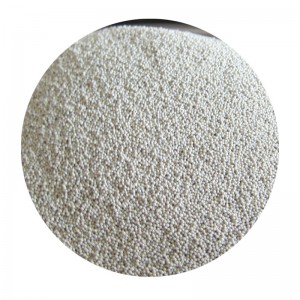The Manufacturing Process of Resin Coated Sand
Resin coated sand (RCS) is a specialized type of sand used primarily in the metal casting industry. Its unique properties result from a resin coating that enhances the performance of traditional sand molds. Understanding the manufacturing process of resin coated sand is crucial for ensuring the highest quality in various applications, from automotive parts to intricate sculptures. This article will streamline the steps involved in the production of resin coated sand, highlighting the materials, methods, and benefits of this innovative product.
Step 1 Selection of Raw Materials
The first step in manufacturing resin coated sand is selecting high-quality raw materials. The primary components include silica sand, which provides the foundational structure, and the resin itself, which typically consists of phenolic, furan, or epoxy compounds. The choice of resin significantly affects the performance characteristics of the coated sand. Additionally, other additives may be included to improve properties such as flowability, strength, and thermal stability.
Step 2 Sand Preparation
Once the raw materials are sourced, the silica sand undergoes several preparatory steps. The sand is first washed and dried to remove impurities such as clay, organic materials, and moisture, which can interfere with the coating process. After washing, the sand is dried in a thermal drier, ensuring that it achieves the desired moisture content. Properly prepared sand is essential for uniform coating and improved mold performance.
Step 3 Coating Process
The primary and most critical phase in the resin coated sand manufacturing process is the application of the resin
. This process can be accomplished through various methods, including mixing, spraying, or fluidized bed coating.In the most common method, the sand is placed in a mixing chamber with the resin and any additional hardeners. This mixture is stirred thoroughly to ensure even distribution of the resin across the sand grains. Depending on the formulation, the resin may harden either at room temperature or with the assistance of heat or catalysts. The end goal is to have a perfect layer of resin that encapsulates each grain of sand, providing the desired mechanical properties.
resin coated sand manufacturing process

Step 4 Curing
Once the sand is coated, the next step is curing. Curing is a vital process that allows the resin to solidify and bond effectively with the sand particles, enhancing the mechanical strength of the mixture. The curing can occur in different ways based on the type of resin used—thermosetting resins typically need heat to achieve full hardness, whereas others may cure at ambient temperatures. This bond is crucial for resisting deformation during the casting process and ensuring the final mold’s integrity.
Step 5 Screening and Quality Control
After curing, the resin-coated sand undergoes screening to separate any oversized particles or lumps from the uniformly coated grains. This step is vital as it ensures that the final product is homogeneous and meets strict quality standards. Quality control measures are implemented throughout the manufacturing process, including checks on sand grain size, resin content, and coating uniformity. These checks help ensure the final product meets the specifications required for various casting applications.
Step 6 Packaging and Distribution
Once the resin-coated sand passes all quality checks, it is then packaged for distribution. Proper packaging is essential to prevent contamination and moisture absorption during storage and transport. Sometimes, the sand is packaged in bulk containers or smaller bags, depending on customer requirements. Clear labeling is also critical, stating the type of resin used and any specific handling instructions.
Conclusion
The manufacturing process of resin coated sand is a meticulously engineered sequence of steps that transform ordinary silica sand into a high-performance material used across various industries. From the careful selection of raw materials through to final quality control, each phase is designed to optimize the characteristics of the sand for metal casting applications. The benefits of using resin coated sand, such as improved surface finish, greater dimensional accuracy, and enhanced mold strength, make it an invaluable component in the production of complex metal components. As industries continue to evolve, the demand for high-quality resin coated sand will undoubtedly grow, underscoring the importance of this manufacturing process in modern industrial applications.
Post time:ພ.ຈ. . 07, 2024 19:55
Next:Techniques for Effective Ceramic Sanding and Surface Finishing
